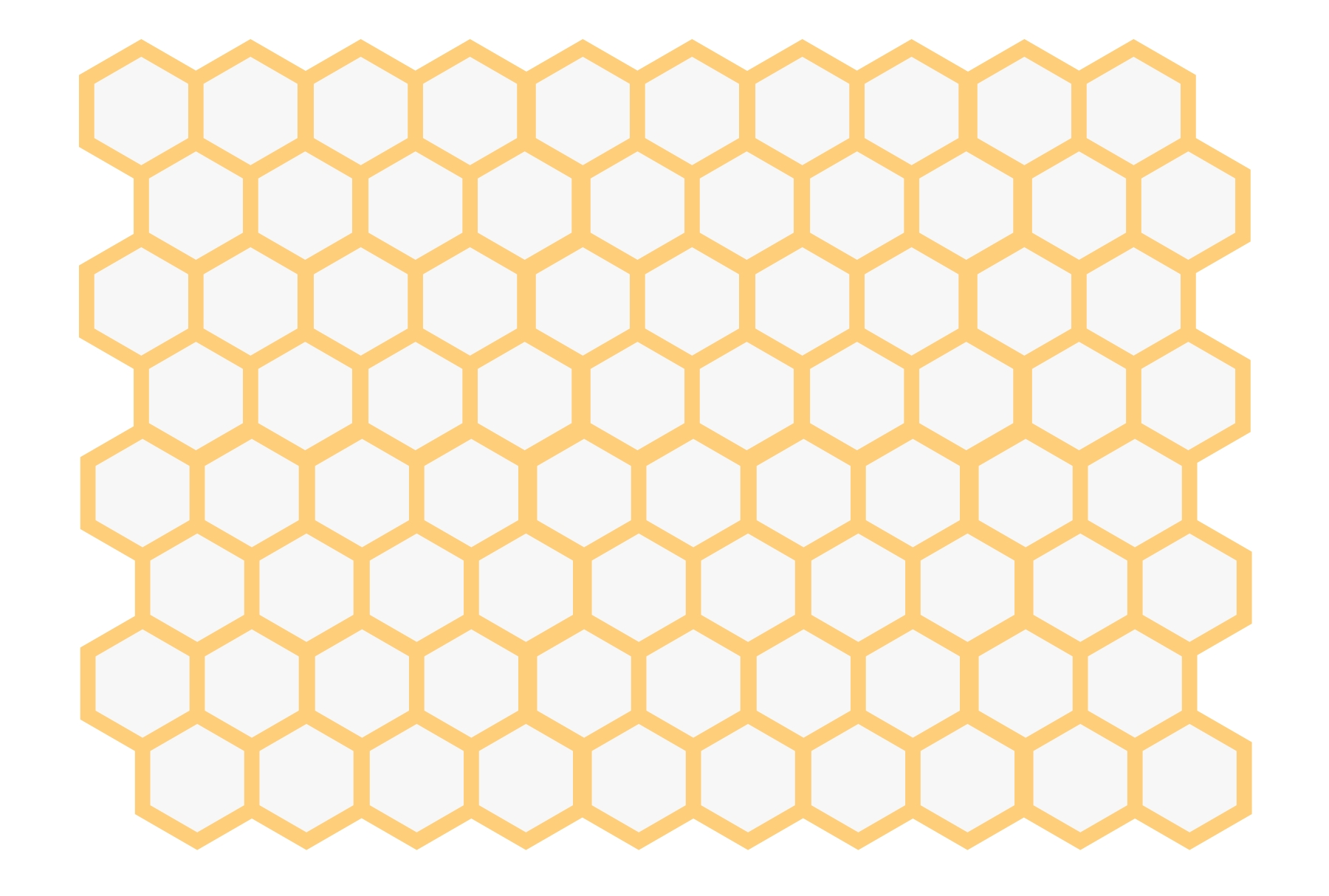Hexagons can solve some of the problems we mentioned in the preceding section. They can help the unequal area problems of choropleth maps and can bring ordered focus to point clusters. Let’s look at a few first:

Hexagonal tiling
As you can see, hexagons have equal length sides and fit nicely next to each other. However, they’re not just a pretty face, they also have properties we can leverage well in data visualization:
- Hexagons divide a given area into equal-sized hexagons. This is called tiling and can also be done with other shapes such as circles, triangles, rectangles, or other polygons.
- However, if you tile your wall with circles, you will end up with gaps between the circles. Covering a plane gap-free with repeating symmetric shapes is called a regular tessellation and is, in fact, only possible with squares, triangles, and hexagons...







































































